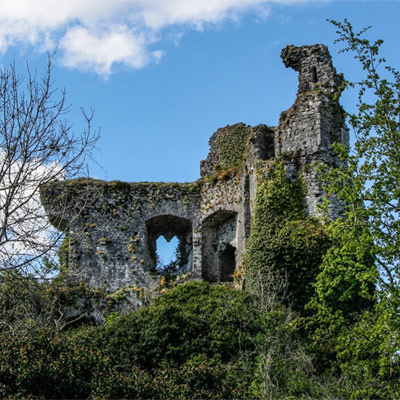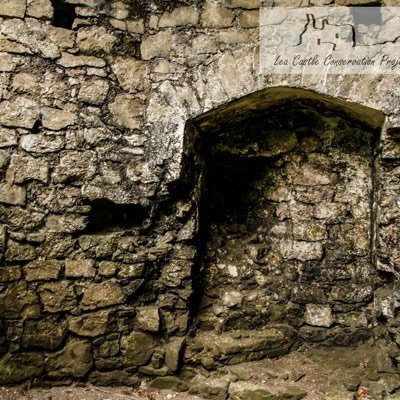History
The history of Lea Castle concerning its original construction is somewhat vague. It has long been held that Earl William Marshall built the original form of the castle but recent researchers suggest that the Baron of Offaly, Gerald fitz Maurice was responsible for the original earthen structure. This was likely to have been a motte and bailey structure, in place by 1203. The first phase of stone work, likely to be the bailey wall surrounding the original earthen structure, was likely built by Meiler fitz Henry. The present keep is located on a rise which is likely to be this original motte structure. The castle is ideally situated for trade and defence along the river Barrow.


